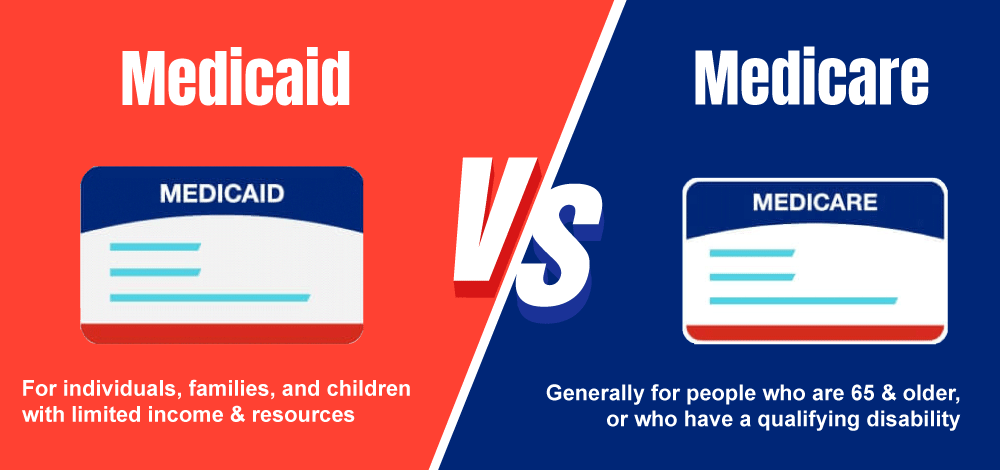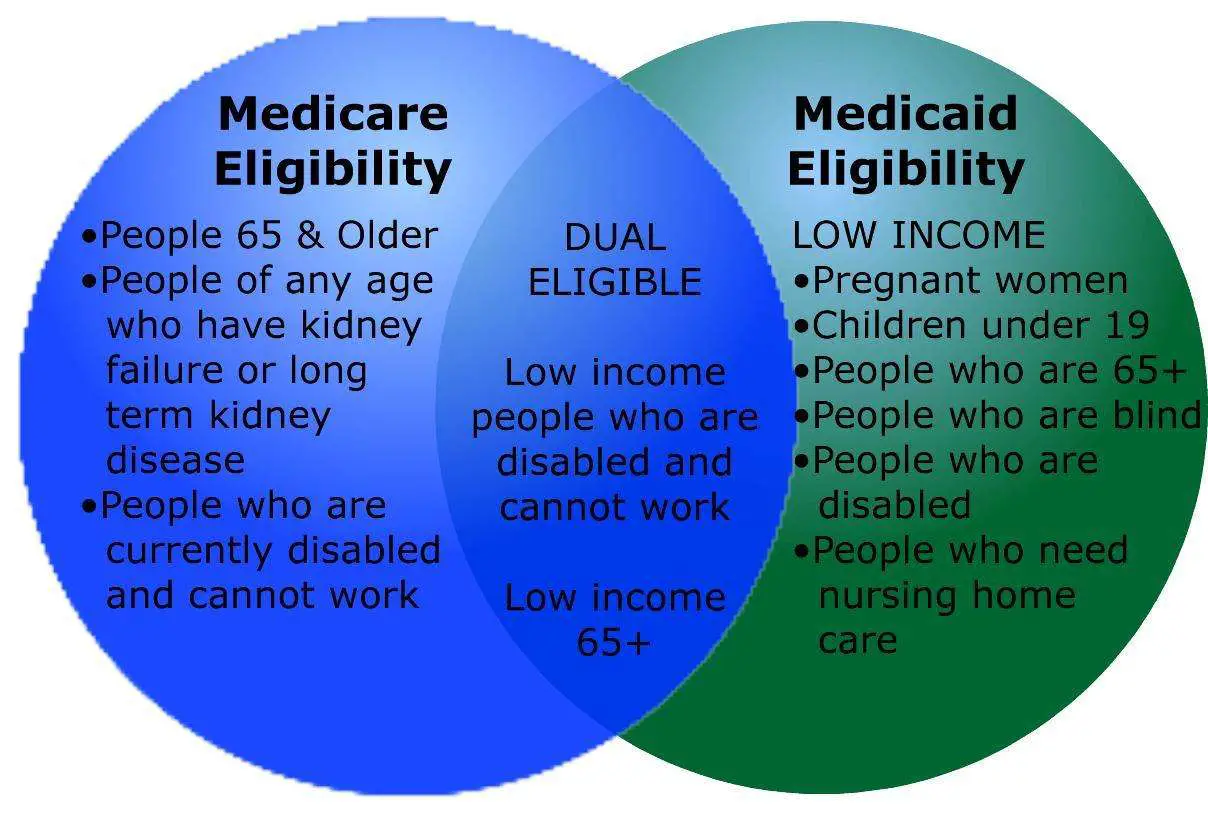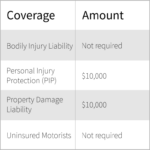Is state insurance Medicare or Medicaid? This question often arises when navigating the complex world of healthcare in the United States. Both Medicare and Medicaid are government-funded programs designed to provide health insurance, but they differ significantly in their eligibility requirements, coverage, and funding sources. Understanding the distinctions between these programs is crucial for individuals seeking healthcare access and for policymakers seeking to ensure equitable and efficient healthcare delivery.
Medicare, primarily for individuals aged 65 and older, is a federal program that provides health insurance for eligible citizens and permanent residents. Medicaid, on the other hand, is a state-run program that offers health insurance to low-income individuals and families, as well as certain groups with disabilities. This article delves into the intricacies of these programs, exploring their differences, similarities, and the role they play in shaping the American healthcare landscape.
Understanding Medicare and Medicaid
Medicare and Medicaid are two major government-funded health insurance programs in the United States, providing health coverage to millions of Americans. While both programs aim to improve access to healthcare, they differ significantly in terms of eligibility, coverage, and funding.
Eligibility
Eligibility for Medicare and Medicaid is determined based on factors such as age, income, and disability status.
- Medicare is primarily for individuals aged 65 and older, regardless of income. It is also available to younger individuals with certain disabilities and those with end-stage renal disease.
- Medicaid is a needs-based program, meaning eligibility is based on income and assets. It covers low-income individuals and families, children, pregnant women, people with disabilities, and seniors who meet specific financial requirements.
Coverage
Medicare and Medicaid offer different types of coverage, reflecting their distinct target populations.
- Medicare provides coverage for hospital stays, doctor visits, preventive care, and prescription drugs. It is divided into four parts:
- Part A: Hospital insurance, covering inpatient care, skilled nursing facilities, hospice care, and some home health services.
- Part B: Medical insurance, covering doctor visits, outpatient care, preventive services, and durable medical equipment.
- Part C: Medicare Advantage, offered by private insurance companies, combines Parts A and B with additional benefits, such as prescription drug coverage and vision care.
- Part D: Prescription drug coverage, offered through private insurance companies, helps cover the cost of prescription drugs.
- Medicaid provides comprehensive coverage for a wide range of services, including hospital care, doctor visits, mental health services, dental care, and prescription drugs. The specific benefits offered vary by state.
Funding
Medicare and Medicaid are funded through different sources.
- Medicare is primarily funded through payroll taxes and general revenue.
- Medicaid is funded jointly by the federal and state governments, with the federal government providing a matching share of state spending.
State Role in Healthcare Programs
The Medicaid program is a federal-state partnership, with the federal government providing financial assistance to states for their Medicaid programs. However, states have significant discretion in administering their Medicaid programs, including eligibility requirements, benefits covered, and program structure.
State Administration of Medicaid
States play a crucial role in administering Medicaid programs. This includes:
- Determining eligibility: States establish eligibility criteria for Medicaid, which can vary depending on factors such as income, age, and disability status.
- Designing benefit packages: States have the flexibility to design their own benefit packages, which can include a wide range of services, such as medical care, prescription drugs, and long-term care.
- Managing program operations: States are responsible for managing the day-to-day operations of their Medicaid programs, including enrollment, claims processing, and provider payments.
State-Specific Medicaid Programs
States often create unique programs within their Medicaid framework to address specific needs of their populations. These programs may target certain demographics, such as children, pregnant women, or individuals with disabilities.
- Healthy Start: This program in Texas provides health insurance to low-income children, including preventive care, immunizations, and treatment for chronic conditions.
- California’s Medi-Cal: This program offers a comprehensive package of health services to low-income Californians, including dental care, mental health services, and prescription drugs.
Medicaid Expansion
The Affordable Care Act (ACA) provided states with the option to expand Medicaid coverage to individuals with incomes up to 138% of the federal poverty level. States that choose to expand Medicaid have seen a significant increase in the number of individuals covered by the program.
- Factors influencing expansion decisions: States consider various factors when deciding whether to expand Medicaid, including budgetary constraints, political climate, and concerns about the program’s long-term sustainability.
- Impact of expansion: Studies have shown that Medicaid expansion has led to improved access to healthcare, reduced uninsurance rates, and improved health outcomes for low-income individuals.
Funding and Administration

Medicare and Medicaid are two major healthcare programs in the United States, providing essential coverage to millions of Americans. Understanding their funding mechanisms and administrative structures is crucial for comprehending how these programs operate and impact the healthcare landscape.
Funding Sources
The funding for Medicare and Medicaid comes from various sources, reflecting the complex nature of these programs.
- Medicare: The primary source of funding for Medicare is through payroll taxes, specifically the dedicated Medicare tax. Individuals and employers contribute a portion of their earnings to the Medicare Trust Fund, which is then used to finance the program’s benefits. Other sources include general revenue, which refers to taxes collected from various sources by the federal government, and premiums paid by beneficiaries.
- Medicaid: Medicaid funding is a joint effort between the federal and state governments. The federal government provides matching funds to states based on their per capita income, while states contribute their own funds. The federal share of Medicaid costs is typically higher for states with lower per capita incomes, ensuring that all states have the resources to provide essential healthcare services to eligible individuals.
Administrative Structures
The administrative structures of Medicare and Medicaid differ significantly, reflecting their distinct funding models and program objectives.
- Medicare: Medicare is administered at the federal level by the Centers for Medicare & Medicaid Services (CMS). CMS oversees all aspects of the program, including eligibility determination, benefit payment, and program oversight. While private insurance companies can play a role in administering Medicare plans, CMS sets the rules and regulations for all Medicare programs.
- Medicaid: Medicaid is a joint federal-state program, with states having significant autonomy in administering the program. Each state develops its own Medicaid program, setting eligibility criteria, benefit packages, and payment rates for providers. While the federal government provides guidelines and regulations, states have flexibility in tailoring their Medicaid programs to meet the specific needs of their populations.
Program Management
The funding and administration of Medicare and Medicaid are complex processes involving multiple stakeholders and intricate regulations.
- Medicare: Medicare is managed through a trust fund system, where payroll taxes are collected and invested to provide benefits to current and future beneficiaries. The Medicare Trust Fund is projected to be depleted in the coming decades, highlighting the need for long-term financing solutions.
- Medicaid: Medicaid is managed through a matching system, where the federal government provides funds to states based on their per capita income. States are responsible for administering their Medicaid programs, including eligibility determination, provider enrollment, and benefit payment.
Coverage and Benefits
Medicare and Medicaid provide essential healthcare coverage to millions of Americans, but their benefits and limitations differ significantly. Understanding these differences is crucial for individuals seeking to navigate the complexities of the U.S. healthcare system.
Medicare Coverage and Benefits, Is state insurance medicare or medicaid
Medicare is a federal health insurance program primarily for individuals aged 65 and older, as well as younger people with certain disabilities. Medicare offers a variety of coverage options, including:
- Hospital Insurance (Part A): Covers inpatient hospital stays, skilled nursing facility care, hospice care, and some home health services. This part of Medicare is generally premium-free for most beneficiaries, as they have already paid for it through payroll taxes during their working years.
- Medical Insurance (Part B): Covers doctor’s visits, outpatient care, preventive services, and some durable medical equipment. Most beneficiaries pay a monthly premium for this coverage.
- Medicare Advantage (Part C): Offered by private insurance companies approved by Medicare, Part C plans combine the coverage of Part A and Part B, and may also include prescription drug coverage (Part D). These plans may offer additional benefits, such as vision, dental, and hearing coverage, but they may also have stricter networks and out-of-pocket costs.
- Prescription Drug Coverage (Part D): Provides coverage for prescription drugs. This coverage is offered through private insurance companies that contract with Medicare. Beneficiaries pay a monthly premium and may also face deductibles and copayments.
Medicaid Coverage and Benefits
Medicaid is a joint federal and state program that provides health coverage to low-income individuals and families, as well as certain groups with disabilities. Eligibility for Medicaid varies from state to state, and the specific benefits offered can also differ. In general, Medicaid covers a wide range of healthcare services, including:
- Inpatient and outpatient hospital care
- Physician services
- Prescription drugs
- Mental health and substance use disorder services
- Long-term care services
- Dental care
- Vision care
Limitations and Exclusions
Both Medicare and Medicaid have limitations and exclusions. Some services may not be covered, or there may be restrictions on the amount of coverage provided.
For example, Medicare Part A does not cover long-term care services, such as assistance with activities of daily living, which are typically covered by Medicaid.
Examples of Specific Benefits
Here are some examples of specific benefits offered by Medicare and Medicaid:
- Medicare:
- Coverage for preventive services, such as annual wellness visits and screenings for cancer and other diseases.
- Coverage for home health services, such as skilled nursing care and physical therapy.
- Coverage for hospice care, which provides support and care for individuals with terminal illnesses.
- Medicaid:
- Coverage for dental care, including routine checkups and cleanings, as well as restorative services such as fillings and extractions.
- Coverage for vision care, including eye exams and glasses or contact lenses.
- Coverage for mental health and substance use disorder services, including therapy, counseling, and medication.
Eligibility Requirements

Eligibility for Medicare and Medicaid is determined based on a set of criteria that vary depending on the specific program and individual circumstances. These programs are designed to provide health insurance coverage to specific populations, such as seniors, people with disabilities, and low-income individuals.
Medicare Eligibility
Medicare eligibility is primarily based on age and citizenship or legal residency status.
- Age: Individuals aged 65 and older are automatically eligible for Medicare Part A, which covers hospital insurance.
- Citizenship or Legal Residency: Individuals must be U.S. citizens or permanent residents for at least five years to be eligible for Medicare.
- Disability: Individuals with certain disabilities, regardless of age, may also qualify for Medicare.
- End-Stage Renal Disease (ESRD): Individuals with ESRD, regardless of age, are eligible for Medicare.
Medicaid Eligibility
Medicaid eligibility is based on income, assets, and other factors, including family size, age, and disability status.
- Income: Individuals must meet specific income thresholds to qualify for Medicaid. The income limits vary by state.
- Assets: Individuals’ assets, such as savings and property, are also considered for Medicaid eligibility.
- Family Size: The number of individuals in a household can affect Medicaid eligibility, as income thresholds are adjusted based on family size.
- Age: Some states offer Medicaid coverage to children and adults under a certain age.
- Disability: Individuals with certain disabilities may qualify for Medicaid, regardless of their age or income.
- Pregnancy: Pregnant women may be eligible for Medicaid, even if they do not meet the standard income requirements.
Comparing Eligibility Requirements
The following table summarizes the key eligibility requirements for Medicare and Medicaid programs:
| Program | Eligibility Criteria |
|—|—|
| Medicare Part A | Age 65 or older, U.S. citizen or permanent resident for at least 5 years, or individuals with certain disabilities or ESRD |
| Medicare Part B | Age 65 or older, U.S. citizen or permanent resident for at least 5 years, or individuals with certain disabilities or ESRD, and willing to pay a monthly premium |
| Medicaid | Income and asset limits, family size, age, disability, pregnancy, and other factors |
Impact on Healthcare System: Is State Insurance Medicare Or Medicaid
Medicare and Medicaid, as two of the largest healthcare programs in the United States, have a profound impact on the overall healthcare system, influencing access to care, healthcare costs, and utilization patterns.
Impact on Access to Care
These programs play a critical role in providing access to care for vulnerable populations, including the elderly, individuals with disabilities, and low-income families. Medicare, for example, guarantees access to essential healthcare services for individuals aged 65 and older, regardless of their income or health status. Medicaid, on the other hand, provides financial assistance for healthcare services to low-income individuals and families, ensuring they have access to necessary medical care.
Influence on Healthcare Costs and Utilization
Medicare and Medicaid influence healthcare costs and utilization in various ways:
Medicare’s Influence on Healthcare Costs
- Negotiated Drug Prices: Medicare has the power to negotiate lower drug prices with pharmaceutical companies, potentially lowering healthcare costs for beneficiaries and the overall healthcare system.
- Volume-Based Reimbursement: Medicare’s traditional fee-for-service model, where providers are paid for each service they provide, can incentivize higher utilization and potentially drive up costs.
- Impact on Private Insurance: Medicare’s presence as a large payer in the market can influence private insurance premiums and benefits, potentially affecting overall healthcare costs.
Medicaid’s Influence on Healthcare Costs
- Cost-Sharing Mechanisms: Medicaid programs often include cost-sharing mechanisms, such as copayments and deductibles, which can encourage cost-consciousness among beneficiaries and potentially reduce overall healthcare expenditures.
- State-Specific Variations: Medicaid programs vary significantly across states, leading to differences in cost and utilization patterns. Some states have implemented innovative programs, such as managed care organizations, to control costs and improve efficiency.
- Impact on Uncompensated Care: Medicaid’s coverage of low-income individuals reduces the burden of uncompensated care on hospitals and other healthcare providers, potentially lowering overall healthcare costs.
Current Challenges and Future Directions
Medicare and Medicaid, the cornerstone of healthcare access for millions of Americans, face a complex web of challenges that necessitate thoughtful solutions and a forward-looking approach. Understanding these challenges is crucial for ensuring the sustainability and effectiveness of these programs for future generations.
Financial Sustainability
The financial sustainability of Medicare and Medicaid is a pressing concern. Rising healthcare costs, an aging population, and expanding coverage have placed significant strain on program budgets.
- Medicare: The program’s trust fund, which finances Part A (hospital insurance), is projected to be depleted by 2028. This means that payroll taxes may not be sufficient to cover future benefits, potentially requiring higher taxes or benefit cuts.
- Medicaid: State governments face growing financial pressures to fund their share of Medicaid costs. This is particularly challenging for states with large Medicaid populations and limited resources.
Program Efficiency and Effectiveness
Improving program efficiency and effectiveness is essential for maximizing the value of healthcare dollars spent. This includes addressing issues such as:
- Fraud and Abuse: Medicare and Medicaid programs are vulnerable to fraud and abuse, which can lead to unnecessary costs and undermine program integrity.
- Administrative Complexity: The complex rules and regulations governing these programs can create administrative burdens for both beneficiaries and providers, leading to inefficiencies and delays in care.
- Quality of Care: Ensuring access to high-quality healthcare for all beneficiaries is a key objective. This requires addressing disparities in care, improving coordination of care, and promoting preventive services.
Healthcare Policy Changes
Significant healthcare policy changes can have a profound impact on Medicare and Medicaid. For example:
- Prescription Drug Costs: Rising prescription drug costs are a major concern for both Medicare and Medicaid. Policy changes aimed at negotiating drug prices or expanding coverage for generic drugs could significantly affect program budgets and beneficiary access to medications.
- Private Insurance Market: Changes to the private insurance market, such as the expansion of health savings accounts or the introduction of new insurance plans, could influence the enrollment and utilization patterns of Medicare and Medicaid beneficiaries.
Last Recap

The interplay between Medicare and Medicaid is essential for understanding the American healthcare system. These programs, though distinct, work in tandem to provide health insurance to millions of Americans. While challenges remain, ongoing efforts to improve accessibility, affordability, and quality of care within these programs are critical for ensuring a robust and equitable healthcare system for all.
Questions and Answers
What is the difference between Medicare and Medicaid?
Medicare is a federal program primarily for individuals aged 65 and older, while Medicaid is a state-run program for low-income individuals and families.
Who is eligible for Medicare?
Individuals aged 65 and older, people with certain disabilities, and individuals with end-stage renal disease are generally eligible for Medicare.
Who is eligible for Medicaid?
Eligibility for Medicaid varies by state but generally includes low-income individuals and families, pregnant women, children, and people with disabilities.
What are the primary sources of funding for Medicare and Medicaid?
Medicare is primarily funded through payroll taxes, while Medicaid is jointly funded by the federal and state governments.







